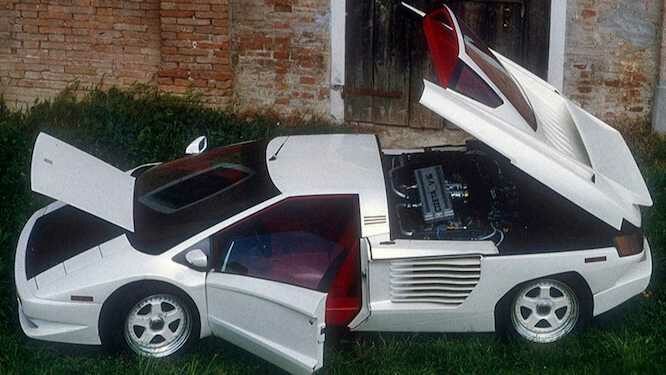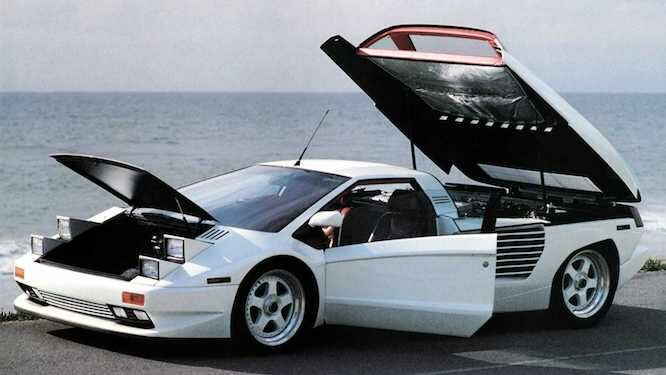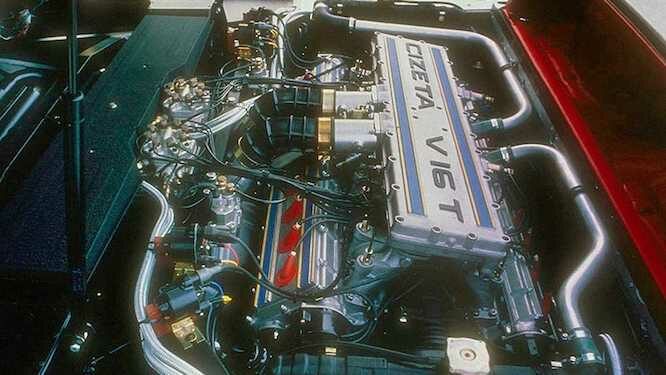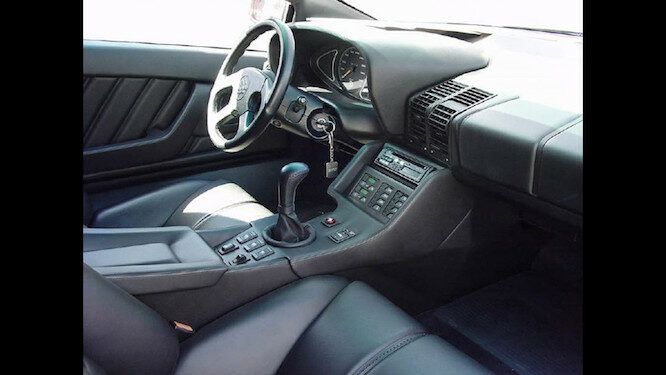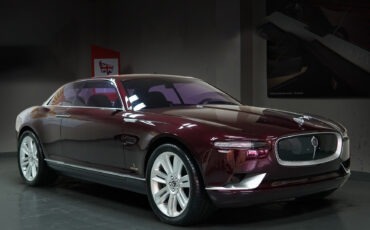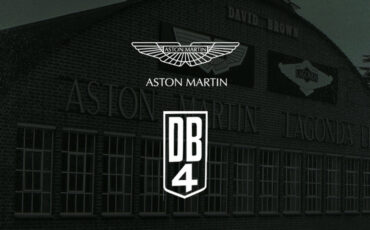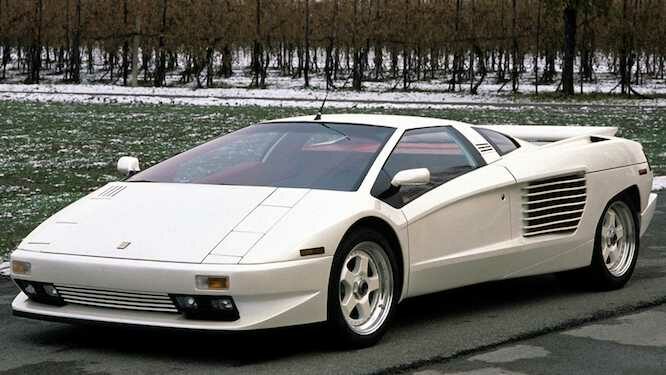
The allure of the Cizeta is encapsulated in the name V16T, which stands for a transverse V16 engine. In the 1980s, making 16 pistons, 16 connecting rods, 64 valves, eight camshafts, two crankshafts, two fuel pumps, and all connected components work in perfect harmony seemed a desperate undertaking. However, the ones who succeeded were not a renowned car manufacturer with a powerful technical department, but a small group of men with limited resources and great ingenuity.
The genesis
The tenacious mastermind behind the endeavor is Claudio Zampolli, who in the mid-1980s left his role as a test driver at Lamborghini to open a workshop for exotic car servicing on Wilshire Boulevard in Los Angeles. Here, he nurtures the idea of building the most exclusive and fastest supercar in the world. The conditions are ideal: after the abstinence following the Yom Kippur War, oil flows reopen, money starts to circulate again, and the hedonistic pleasure of living reignites.
In those years, enthusiasts with substantial financial resources compete to purchase the most expensive limited-edition supercars that the most famous car manufacturers hasten to bring to market. It’s the right moment for Zampolli. His first thought is for the engine, which must be exceptional and superior to any other. Thus, he chooses the spectacular V16 architecture.
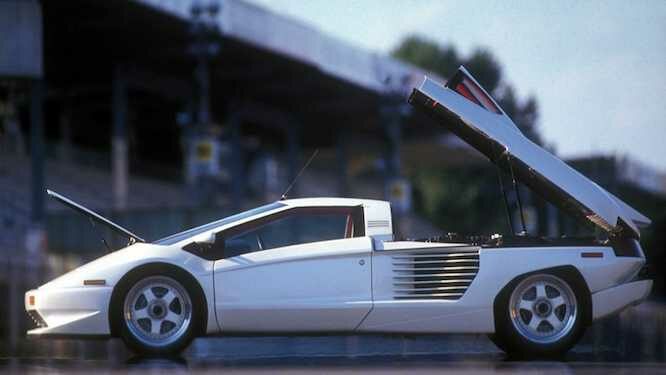
Zampolli creates the prototype and, to test it, cuts a Ferrari 308 lengthwise and widthwise, reassembling it around the new engine. The result is a mind-blowing car designed to attract potential investors. Ultimately, Giorgio Moroder, a multi-award-winning Italian-American musician, joins the venture with a 50% stake, and the project is renamed Cizeta-Moroder.
Claudio Zampolli then opens a headquarters in Modena, the only place in the world where he can find the technical expertise to realize his project. Modena, with its automotive tradition and engineering excellence, represents the perfect starting point to bring one of the most iconic and captivating supercars ever created to life.
At the time, Lamborghini was struggling under Chrysler’s ownership, which aimed to sell it to the Malaysian company Mycom Setdco. Amid this uncertainty, there was a mass exodus of personnel. Zampolli had no trouble recruiting Oliviero Pedrazzi and Achille Bevini, two former Lamborghini technicians, to help perfect the 5955 cc Cizeta engine. This engine featured centrally-located timing control and power take-offs for the transverse transmission. The whole assembly was tilted forward by 10 degrees to accommodate the ZF transmission, resulting in a significant lateral width that required very wide tracks.
Lanosè Bronzatti, another ex-Lamborghini technician, tackled this challenge by developing the suspension system and the tubular space frame chassis, crafted by William Vaccari. With the engine and chassis defined, it was time to design the body. Zampolli turned to Marcello Gandini, who was disillusioned with Chrysler. Gandini’s initial design resembled an overly wide Lamborghini Bravo. Zampolli wasn’t fond of it but lacked the courage to tell the maestro directly. Instead, he requested a few changes. Gandini replied that at that stage, it would be better to start anew rather than make alterations.
The new design featured an aggressive, aerodynamic profile with the cabin pushed forward almost touching the rear roof section, emphasizing the car’s sporty character. Notable elements included vertically stacked quad pop-up headlights, a seamless rise from the front bumper to the windshield and roof, side air intake grilles enhancing the car’s aggressive look, and a refined interplay of surfaces highlighting the spoiler and air outlets.
The most challenging aspect was the rear hood. Gandini designed it to be immense, horizontal, and very wide, partly to emphasize the engine’s overwhelming power and partly due to necessity. This made the car’s power overtly evident, but the effect was somewhat unsettling. Zampolli and Gandini eventually agreed to harmonize the design by extending the rear cabin in a distinctive shape, with elongated pillars and a rear window, as seen in the final model. In hindsight, some elements of the V16T resemble the Lamborghini Diablo, but it’s essential to remember that the Cizeta V16T debuted three years earlier.
Giancarlo Guerra, a skilled panel beater with 40 years of experience at Ferrari and Lamborghini, transformed Gandini’s designs from paper to metal. Other talented Modenese artisans crafted the exceptionally wide interior (the car is 2.05 meters wide), creating a comfortable environment that appealed to American tastes. The dashboard featured the car’s only carbon fiber component, showcasing a blend of traditional craftsmanship and modern materials.
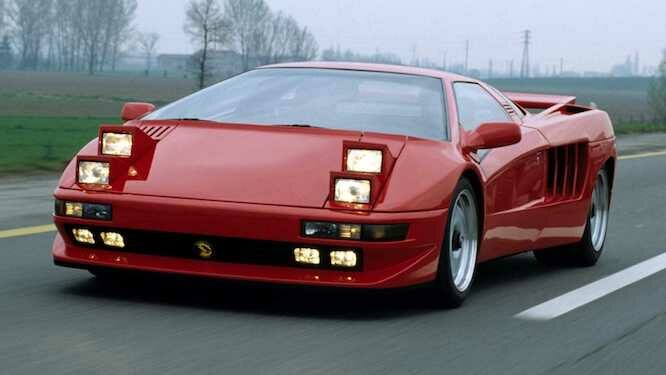
The unveiling
The Cizeta-Moroder V16T was unveiled with a press conference, some drawings, and a scale model at the Los Angeles Auto Show on December 5, 1988. The first complete model debuted at the Geneva Motor Show on March 7, 1991. Production was scheduled to start in 1990, with a plan to produce 50 units that could potentially increase to 100 if enough buyers could be found, each willing to spend $250,000. However, Giorgio Moroder was frustrated by the slow progress and wanted to speed up production by using a fiberglass body and an existing mechanical setup, such as BMW’s. Zampolli, on the other hand, was determined to keep the exclusive “16-cylinder” engine. The rift between the two was inevitable, and Zampolli continued alone with the company, now renamed Cizeta Automobili S.r.l.
Claudio Zampolli’s unwavering vision of the V16T as the ultimate expression of handcrafted exclusivity clashed with the logic of profitability. In practice, the $250,000 price tag, though high, was insufficient to cover production costs. The most significant problem, however, was that the V16T was not homologated for road use in the United States. Fortunately, initial orders came from Asia and the Middle East, including three from the Sultan of Brunei.
As production progressed slowly, several small modifications were made: the side air intakes were fitted with vertical slats instead of horizontal ones, the fuel injection system transitioned from Bosch K-Jetronic to a custom system made by former Weber-Marelli employees, and the instrument panel retained only the speedometer and tachometer, with other indicators replaced by warning lights. “Americans don’t like looking at gauges,” Zampolli remarked. Finally, a new spoiler was added to allow the car to clear small garage thresholds and road bumps without damage.
The decline
The global crisis triggered by the collapse of the Japanese bubble was looming, and Zampolli found himself in increasing difficulty. Bankruptcy was inevitable, arriving in 1994 after only eight or nine units had emerged from the Via Bazzini workshop in Modena, with parts left for another two. One of these was an intriguing convertible version, where designer Fabrizio Ferrari and panel beater Giancarlo Guerra ingeniously solved the problem of where to attach the roof by splitting the enormous engine cover into two parts. The shorter section, where the roof was fixed, opened in the opposite direction to the other part.
After the bankruptcy, Zampolli returned to California and founded Cizeta Automobili USA, primarily to provide support and spare parts for existing V16T owners. He also resumed work on the convertible version that had been put on hold due to the bankruptcy. The new model debuted on August 15, 2003, at the Concorso Italiano in Pebble Beach, aptly named the Fenice TTJ. This name clearly alluded to the Phoenix, the mythical Egyptian bird that rises from its ashes.
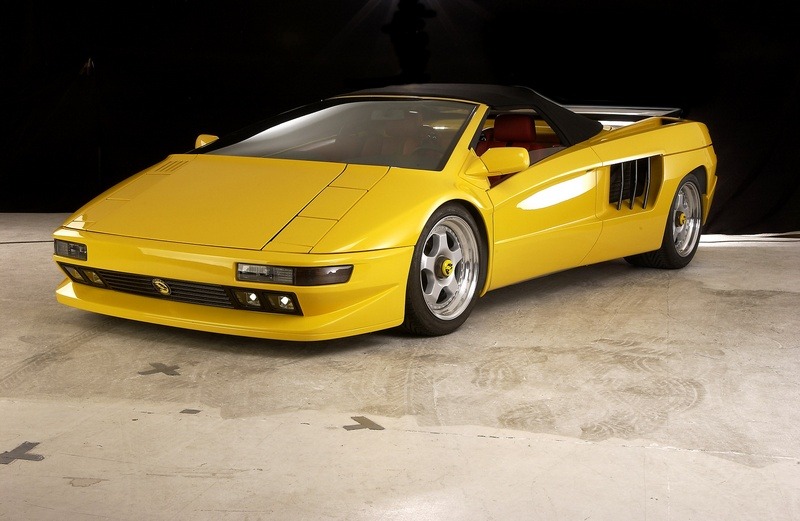
Despite the financial and production setbacks, Zampolli’s dedication to his vision never wavered. The Fenice TTJ, embodying the rebirth of Cizeta, featured the same groundbreaking V16 engine and retained the aggressive, forward-thinking design elements that made the original V16T so distinctive. With the launch of the Fenice TTJ, Zampolli demonstrated his resilience and commitment to the spirit of innovation and exclusivity that defined Cizeta from the start.
Cizeta Automobili USA faced another setback in 2006, but it continued to exist and remains active today under new ownership. In July 2021, Claudio Zampolli passed away, leaving behind a legacy cherished by many. On January 22 of the same year, the auction house RM Sotheby’s sold a Cizeta V16T with chassis #ZA9V16T00MMD38101 for $665,000. Just a year later, on January 27, 2022, RM Sotheby’s sold the 1988 prototype Cizeta-Moroder V16T with chassis #001 in Phoenix for an impressive $1,363,500.
Conclusions
The full success that eluded the Cizeta V16T during its production years has been realized in the classic car market, where the V16T is now recognized as an extraordinarily rare and exclusive supercar. Its incredible performance, coupled with the fascinating and tumultuous story of Claudio Zampolli’s relentless pursuit of his dream car, has cemented its place in automotive history.
The Cizeta V16T’s journey from a bold concept to a highly sought-after classic illustrates the enduring appeal of visionary engineering and design. Its legacy continues to captivate car enthusiasts and collectors around the world, standing as a testament to the passion and determination of Claudio Zampolli, the man who, against all odds, brought his dream car to life./p>

